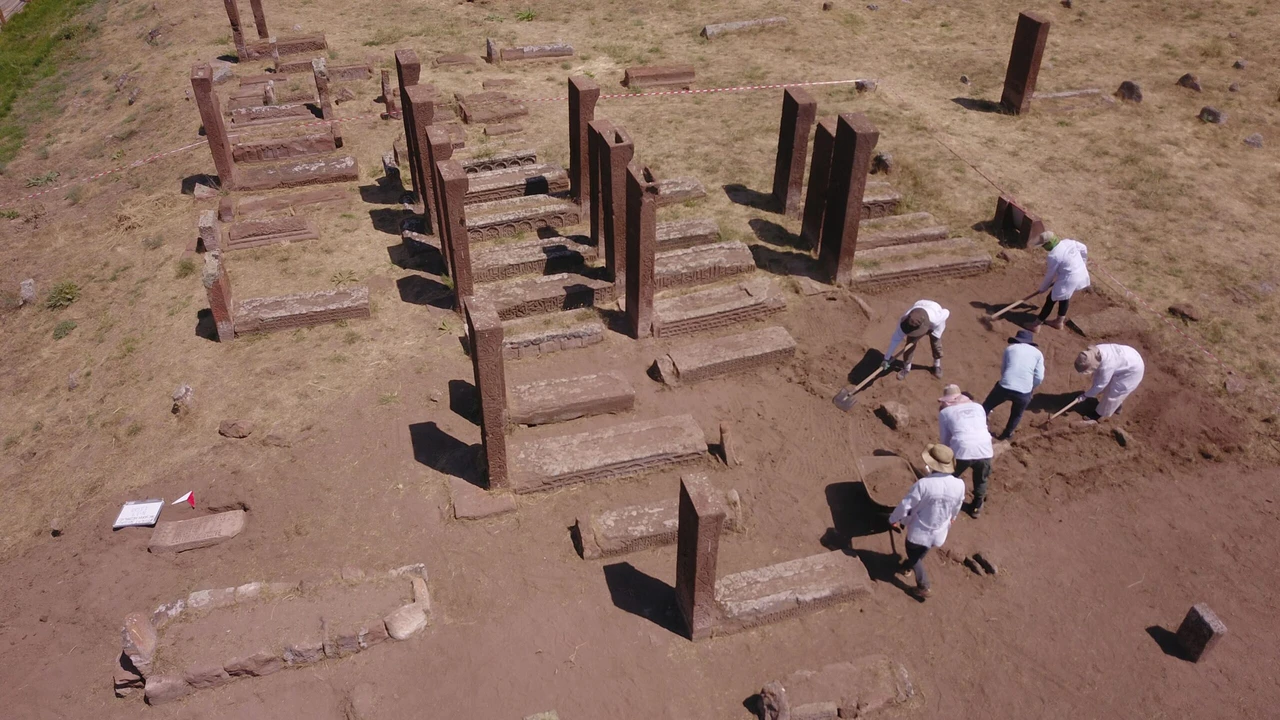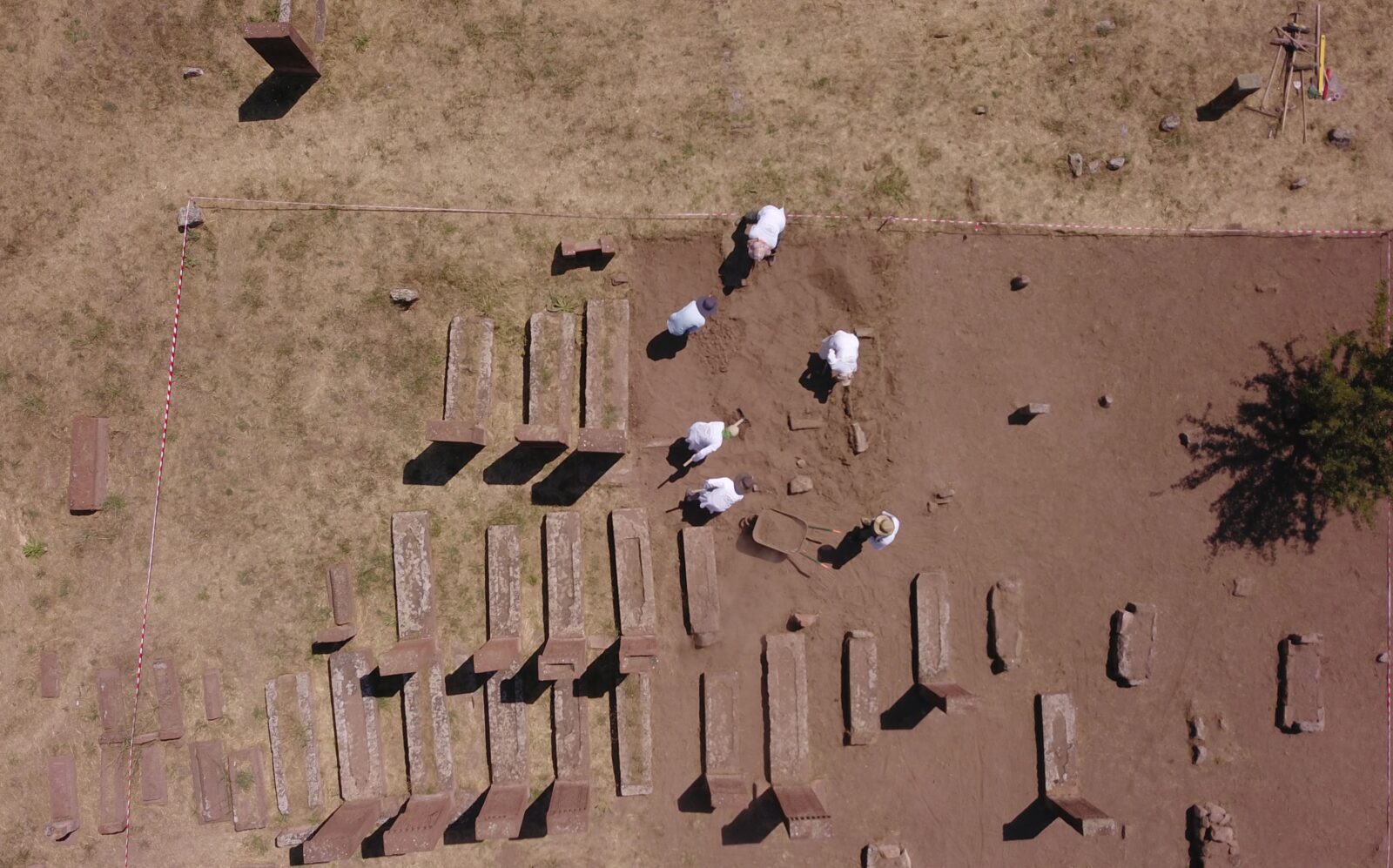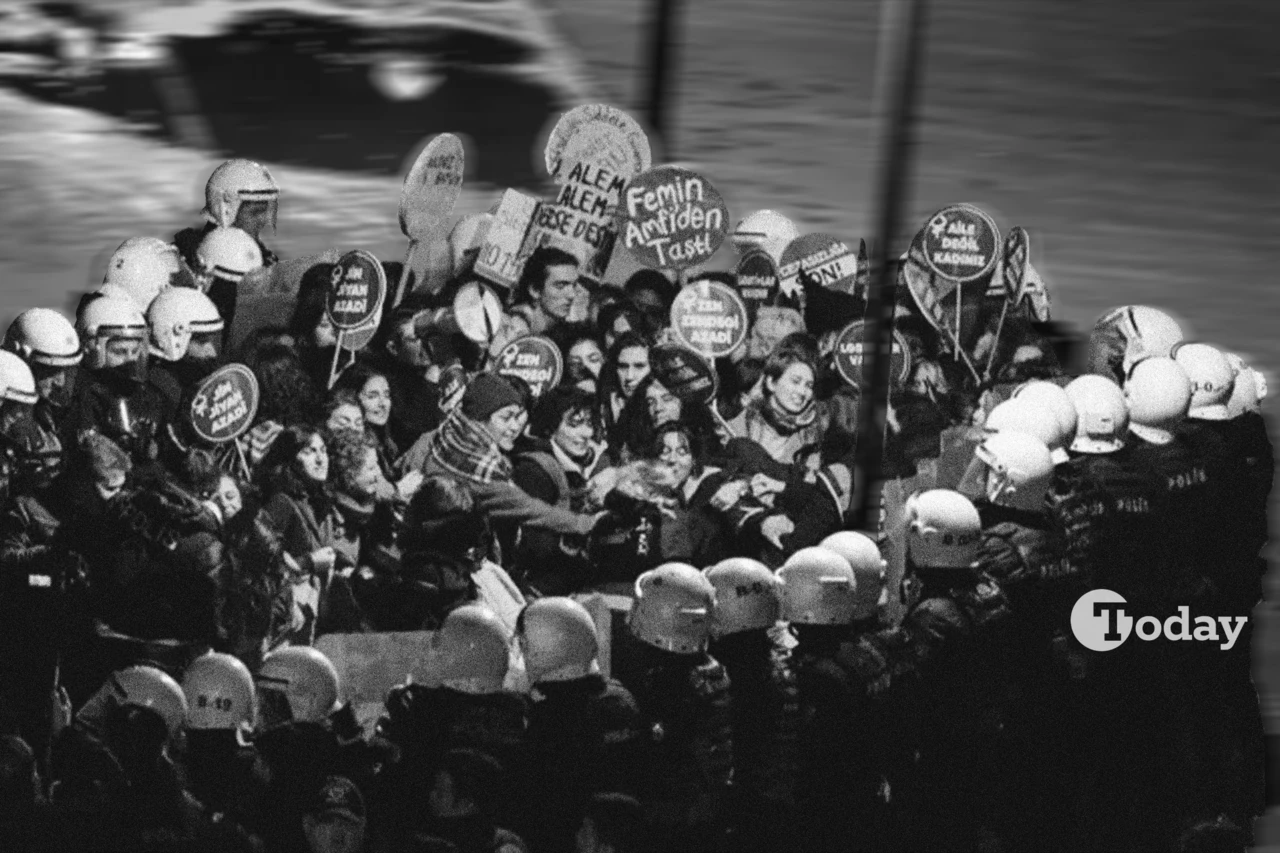Restoration work erases World War I damage at Türkiye’s Seljuk Square Cemetery
 Excavation and restoration works carried out in the Seljuk Square Cemetery, which is the largest Turkish Islamic cemetery in the world, located in Ahlat district of Bitlis, Türkiye, August 12, 2024 (IHA Photo)
Excavation and restoration works carried out in the Seljuk Square Cemetery, which is the largest Turkish Islamic cemetery in the world, located in Ahlat district of Bitlis, Türkiye, August 12, 2024 (IHA Photo)
Significant restoration work is underway at the Seljuk Square Cemetery in Ahlat, Bitlis, known as the largest Turkish-Islamic cemetery in the world.
The project aims to remove traces of damage caused during World War I.
The cemetery, listed on the UNESCO World Heritage Tentative List, is undergoing excavation and restoration under the permission and financial support of the Ministry of Culture and Tourism and led by Mehmet Kulaz from Van Yuzuncu Yil University Department of Art History.

The restoration focuses on the 470-meter-long road that passed through the center of the cemetery during World War I, which was used as the Ahlat-Tatvan road. This road caused significant damage to the cemetery’s structures, including sanduka (tombstones), shahide (gravestones), and akit (underground chamber tombs).
“Our primary focus for the 2024 season has been the rehabilitation of the area used as the Ahlat-Tatvan road during World War I. This road ran through the cemetery, damaging hundreds of shahide and sanduka,” Kulaz said.
He further said that the underground chamber tombs were also affected.
“Our work this year has included repairing these damages, restoring the site, and addressing new findings. We have repaired and reassembled broken tombstones and sanduka, leveled the ground, and worked on the underground chamber tombs. The walls of the enclosure were rebuilt with the support of the Ministry of Culture and Tourism. Our goal is to restore the tombstones to their original positions and ensure the preservation of this historic site,” Kulaz added.

This extensive restoration project is making significant contributions to preserving the historical values of Seljuk Square Cemetery and addressing the damage caused during World War I.
The efforts aim to ensure that the cemetery can be better appreciated by future generations.



